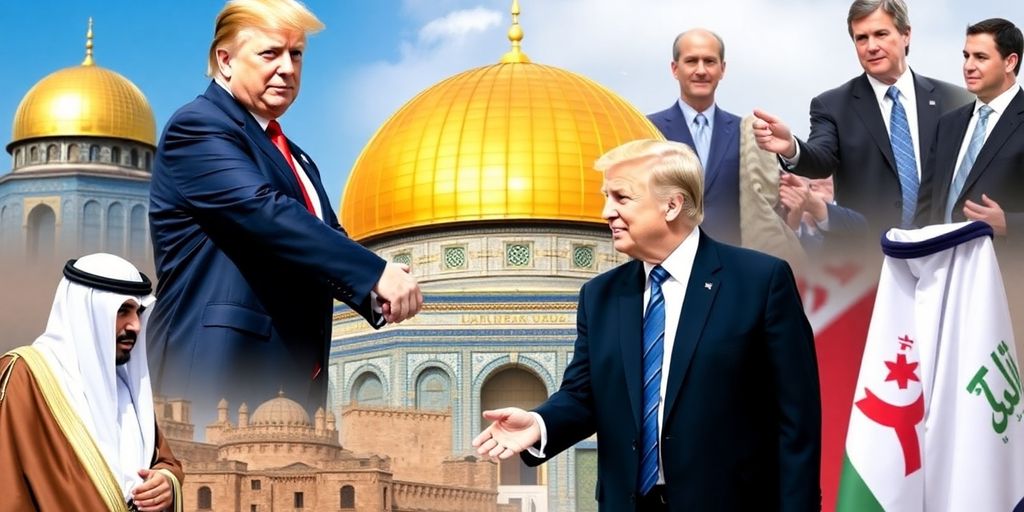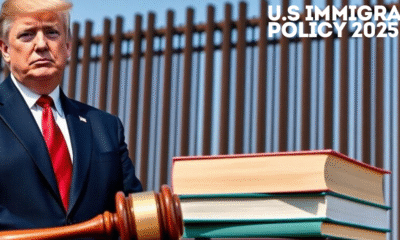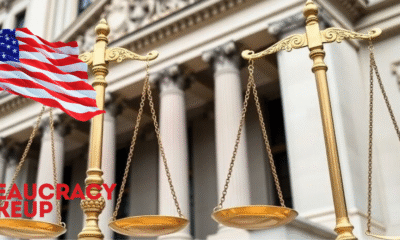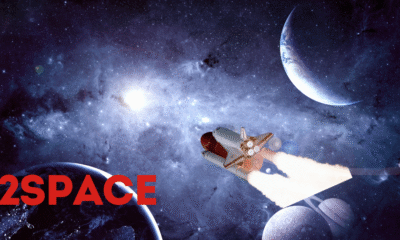Business
Trump’s Middle East Tour: Economic Gains and Diplomatic Challenges

Donald Trump recently concluded a significant four-day tour of the Middle East, visiting Saudi Arabia, Qatar, and the United Arab Emirates. The trip was marked by discussions on economic investments and energy partnerships, but it also highlighted ongoing diplomatic challenges, particularly regarding Iran and the Ukraine crisis.
Key Takeaways
- Trump hailed the tour as historic, emphasizing economic opportunities.
- He imposed a 10% tariff on the three countries visited.
- Diplomatic progress on key issues like Ukraine and Iran remains elusive.
- Trump confirmed plans to meet with Vladimir Putin in the near future.
Economic Opportunities in the Middle East
During his visit, Trump focused on fostering economic ties, particularly in the energy sector. He announced a projected investment of $440 billion from the UAE into the U.S. energy market by 2035. This investment is part of a broader strategy to enhance American energy independence and create jobs.
Trump’s meetings with leaders in the region were characterized by discussions on mutual investments and trade agreements. He expressed optimism about the economic benefits these partnerships could bring to the U.S., stating, "The jobs and money coming into our country, there’s never been anything like it."
Tariffs Imposed on Host Countries
Despite the positive tone regarding economic relations, Trump also confirmed that he imposed a baseline tariff of 10% on all three countries he visited. This tariff is part of his broader trade policy aimed at protecting American industries. The specifics of the tariffs are as follows:
| Country | Tariff Rate |
|---|---|
| Saudi Arabia | 10% |
| Qatar | 10% |
| United Arab Emirates | 10% |
This move aligns with Trump’s approach to trade, which often includes leveraging tariffs as a negotiating tool.
Diplomatic Challenges Persist
While the economic discussions were fruitful, Trump’s tour did not yield significant progress on pressing diplomatic issues. Notably, tensions with Iran remain high, with Trump warning that the situation could escalate if not handled properly. He stated, "The situation will be done nicely or not nicely," indicating a tough stance on Iran’s nuclear ambitions.
Additionally, Trump opted not to attend peace talks in Turkey regarding the Ukraine crisis, instead confirming his intention to meet with Russian President Vladimir Putin soon. This decision has raised questions about the U.S.’s role in international diplomacy, especially in light of ongoing conflicts.
Conclusion
Trump’s Middle East tour was a blend of economic optimism and diplomatic challenges. While he successfully highlighted potential investments and partnerships, the lack of progress on critical issues like Iran and Ukraine underscores the complexities of U.S. foreign policy in the region. As he returns to Washington, the implications of this visit will likely influence future diplomatic and economic strategies.
Sources
-

 Business5 days ago
Business5 days agoS&P 500 Soars in Best May in Decades Amid Tariff Relief and Nvidia’s Surge
-

 Healthcare6 days ago
Healthcare6 days agoAttention Economy Arms Race: Reclaim Your Focus in a World Designed to Distract You
-

 Immigration5 days ago
Immigration5 days agoTrump’s Immigration Crackdown: Legal Battles and Policy Shifts
-

 Business4 days ago
Business4 days agoUS Stock Market Soars in May Amidst Tariff Tensions and Inflation Worries
-

 Government5 days ago
Government5 days agoTrump Administration’s Government Reshaping Efforts Face Criticism and Legal Battles
-

 Business5 days ago
Business5 days agoTrump’s Tariffs: A Global Economic Reckoning
-

 Foreign Policy2 days ago
Foreign Policy2 days agoInside Schedule F: Will Trump’s Federal Workforce Shake-Up Undermine Democracy?
-

 Press Release2 days ago
Press Release2 days agoIn2space Launches Campaign to Make Space Travel Accessible for All










